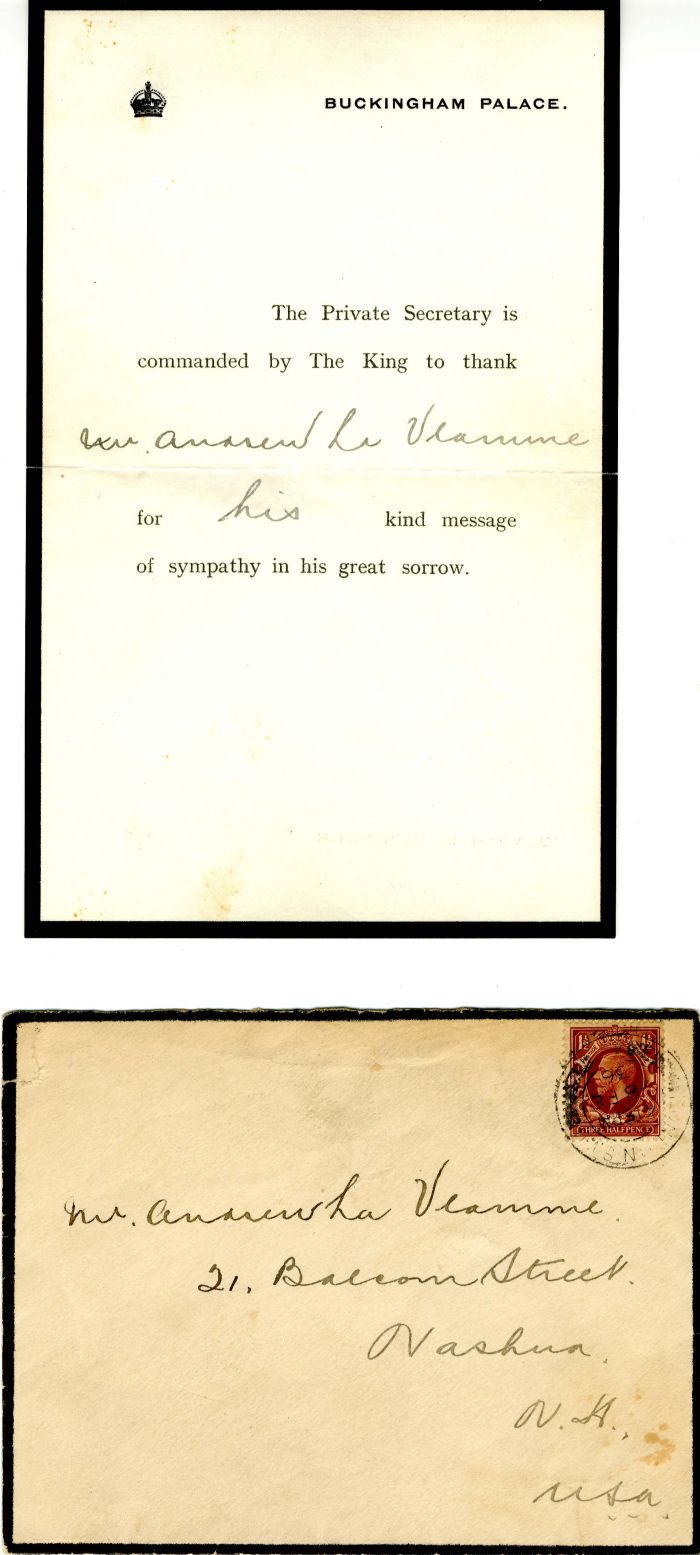Mourning Note and Cover sent by George VI - Very Rare
Inv# AU1351
Mourning note and cover sent to Nashua, NH from George VI with thanks on the sympathy sent on the death of his father George V.

Albert Frederick Arthur George (1895-1952) George VI (Albert Frederick Arthur George; 14 December 1895 – 6 February 1952) was King of the United Kingdom and the Dominions of the British Commonwealth from 11 December 1936 until his death. He was the last Emperor of India, and the first Head of the Commonwealth. As the second son of King George V, he was not expected to inherit the throne and spent his early life in the shadow of his elder brother, Edward. He served in the Royal Navy and Royal Air Force during World War I, and after the war took on the usual round of public engagements. He married Lady Elizabeth Bowes-Lyon in 1923, and they had two daughters, Elizabeth and Margaret. George's elder brother ascended the throne as Edward VIII on the death of their father in 1936. However, later that year Edward revealed his desire to marry the divorced American socialite Wallis Simpson.
British Prime Minister Stanley Baldwin advised Edward that for political and religious reasons he could not marry Mrs Simpson and remain king. Edward abdicated in order to marry, and George ascended the throne as the third monarch of the House of Windsor. On the day of his accession, the parliament of the Irish Free State removed the monarch from its constitution. Further events during George's reign accelerated the break-up of the British Empire and its transition into the Commonwealth of Nations. Three years after his accession, the Empire and Commonwealth, except the Irish Free State, was at war with Nazi Germany. In the next two years, war with Italy and Japan followed. Though Britain and its allies were ultimately victorious, the United States and the Soviet Union rose as pre-eminent world powers and the British Empire declined.
After the independence of India and Pakistan in 1947, his title of Emperor of India was abandoned in June 1948. Ireland was formally declared a republic in 1949, and India followed suit the following year. George adopted the new title of Head of the Commonwealth. He was beset by health problems in the later years of his reign. He was succeeded by his elder daughter, Elizabeth II. In the words of Labour M.P. George Hardie, the abdication crisis of 1936 did "more for republicanism than fifty years of propaganda". George VI wrote to his brother Edward that in the aftermath of the abdication he had reluctantly assumed "a rocking throne", and tried "to make it steady again".
He became king at a point when public faith in the monarchy was at a low ebb. During his reign his people endured the hardships of war, and imperial power was eroded. However, as a dutiful family man and by showing personal courage, he succeeded in restoring the popularity of the monarchy. The George Cross and the George Medal were founded at the King's suggestion during the Second World War to recognise acts of exceptional civilian bravery.









Ebay ID: labarre_galleries